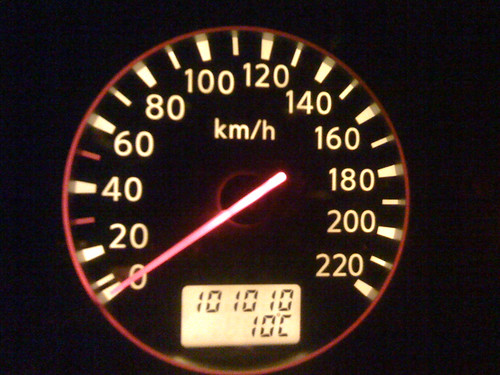So, its a typical weekday evening, I have several things waiting to be completed, but earlier on today, John, EI7BA posed a question on a mailing list looking for some information about a piece of software.
He wanted to know if it would work with his FT-847, and, I have the same transceiver here so I thought I’d help him out by trying to use the software in a Windows Virtual Machine running on my Mac-mini.
First problem, the mini is at the wrong end of the desk, about 7 feet from my FT-847. So I slide the mini and all attached to it along the desk to make up the shortfall, all good.
I test the software, and it seems to work ok with the 847, report the same to EI7BA, all good.
Now, what exactly happened I’m not sure, but I saw my iPod display light up, thinking it a bit strange, I picked it up and pushed the docking connector home again, all good.
iTunes gives me an error when it tries to sync, hmmm, Disk Repair says it can’t be repaired, hmmm, I tried to fsck it in the terminal
bash-3.2# fsck_hfs -fy /dev/disk1s2
** /dev/rdisk1s2
Executing fsck_hfs (version diskdev_cmds-540.1~34).
** Checking Journaled HFS Plus volume.
The volume name is John's Pod
** Checking extents overflow file.
** Checking catalog file.
Keys out of order
(4, 3045)
** Rebuilding catalog B-tree.
** The volume John's Pod could not be repaired.
bash-3.2#
Not good. I tried to mount it, but it refuses to mount, not good. The perceived wisdom on google is to purchase Disk Warrior. I have a few GB of data on there that I don’t want to loose, but it’s not really worth spending money on, so after a bit more trawling through web pages I decide the data is gone (not good), but I will be able to gather it all together again, given time.
Before I “restore” the iPod, and purely for the hell of it I plug it into my Roadkill (I first heard Bill, N2CQR use the term) Ubuntu Laptop. Lo and behold, the drive mounted automatically.
I immediately remounted it read-only and started copying off data. That seemed to complete successfully, so I unmounted the drive and plugged it back into the mini. Much to my surprise, the drive mounted (and iTunes was happy to sync it). Just to check, I tried an fsck again and it still gave gave the same errors as above. For now, I’ve decided to ignore the errors until such time as it stops working completely.
So, if you have an iPod that gives you a Keys out of order error message when you try to check and/or repair it, talk to a friendly Linux user and ask them if you could plug your iPod into it before you decide your data is toast.
 Two things are immediately obvious. The peak instantaneous value, and the average are both higher. This should help increase the output from the system for 2012.
Two things are immediately obvious. The peak instantaneous value, and the average are both higher. This should help increase the output from the system for 2012.





